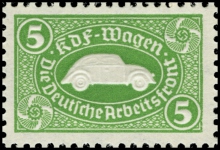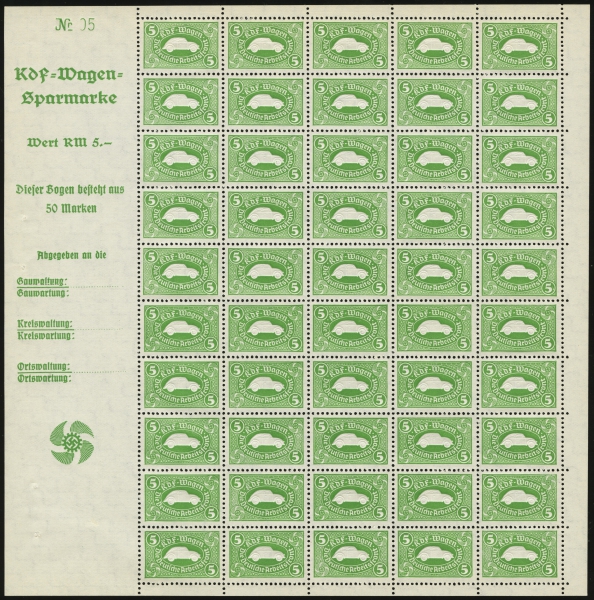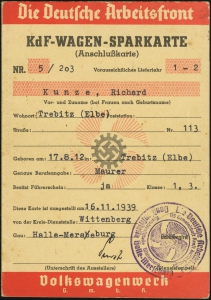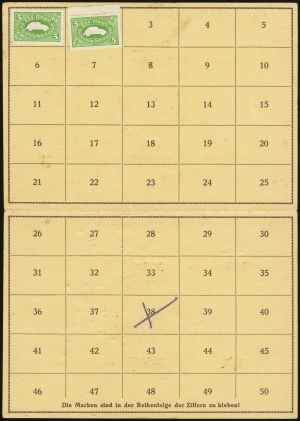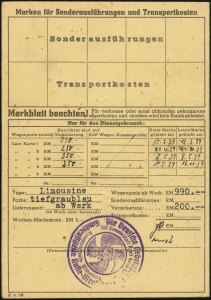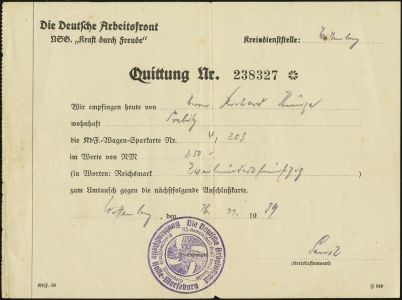KdF Volkswagen Savings Stamp
In 1938, Germany began a program under which German citizens could register to buy a new Volkswagen. The cost of a sedan was 990 RM, plus any fees for special add-ons, insurance, or transportation.
To buy a car, the German citizen would make payments in advance, for which he would receive savings stamps in either red or green color. Each stamp denoted 5 RM paid. The stamps were printed in sheets of 50.
The stamps were mounted in a savings book and cancelled, with each savings book accounting for 250 RM paid. In theory, once the buyer had paid the requisite price and their registration number was reached, they would receive the car. Unfortunately for the buyers, with the start of WWII, the factory was converted to war production in 1939, and those few buyers who had taken delivery of a car had their cars confiscated in exchange for a voucher promising replacement after the war.
After the war, thousands of citizens who had paid money toward a car sued for reimbursement, but they were unsuccessful.
This particular booklet shows that the buyer had paid 1,000 RM (booklets 1-4 @ 250 RM each) of a total purchase price of 1,190 RM.
Also included with this booklet was a receipt for the turn-in of the previous booklet, #4.
Due to the unique nature of these stamp and the attractive design, they are unfortunately a popular target for forgery. Genuine copies can be distinguished by a very tiny, faint “DAF” watermark. This watermark can be very difficult to see — the scans below were accomplished at very high resolution using a photo-negative scan.
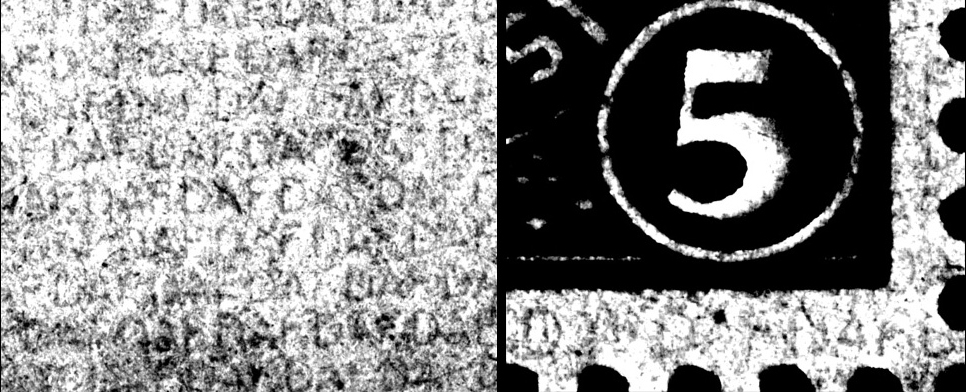
DAF Watermark
Set Date(s)
Watermark(s)
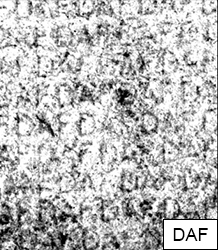
Album Page(s)
KdF Volkswagen Savings Stamp
In 1938, Germany began a program under which German citizens could register to buy a new Volkswagen. The cost of a sedan was 990 RM, plus any fees for special add-ons, insurance, or transportation.
To buy a car, the German citizen would make payments in advance, for which he would receive savings stamps in either red or green color. Each stamp denoted 5 RM paid. The stamps were printed in sheets of 50.
The stamps were mounted in a savings book and cancelled, with each savings book accounting for 250 RM paid. In theory, once the buyer had paid the requisite price and their registration number was reached, they would receive the car. Unfortunately for the buyers, with the start of WWII, the factory was converted to war production in 1939, and those few buyers who had taken delivery of a car had their cars confiscated in exchange for a voucher promising replacement after the war.
After the war, thousands of citizens who had paid money toward a car sued for reimbursement, but they were unsuccessful.
This particular booklet shows that the buyer had paid 1,000 RM (booklets 1-4 @ 250 RM each) of a total purchase price of 1,190 RM.
Also included with this booklet was a receipt for the turn-in of the previous booklet, #4.
Due to the unique nature of these stamp and the attractive design, they are unfortunately a popular target for forgery. Genuine copies can be distinguished by a very tiny, faint “DAF” watermark. This watermark can be very difficult to see — the scans below were accomplished at very high resolution using a photo-negative scan.

DAF Watermark
